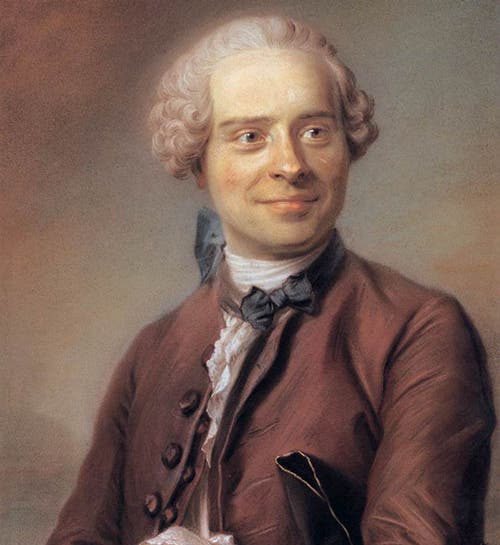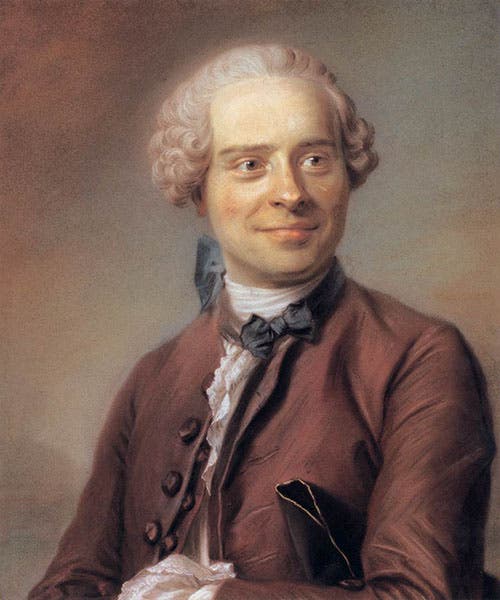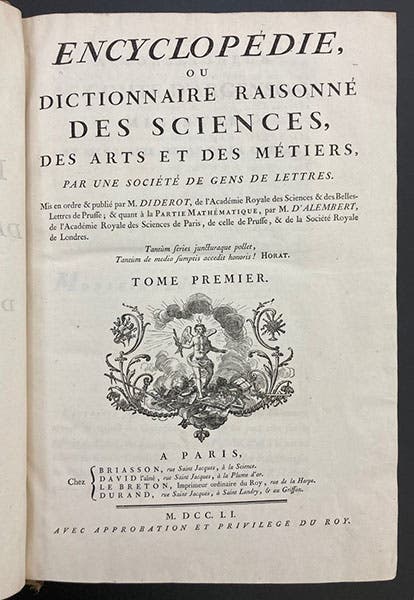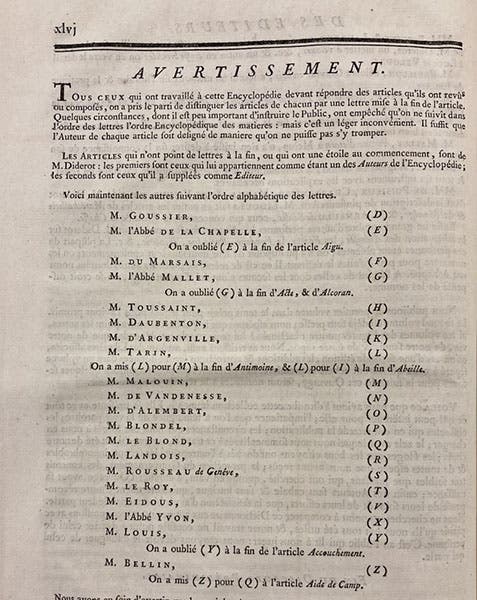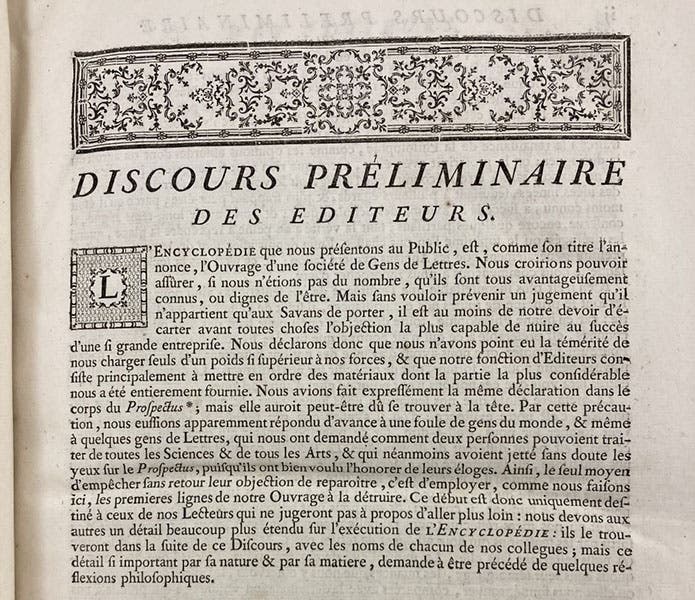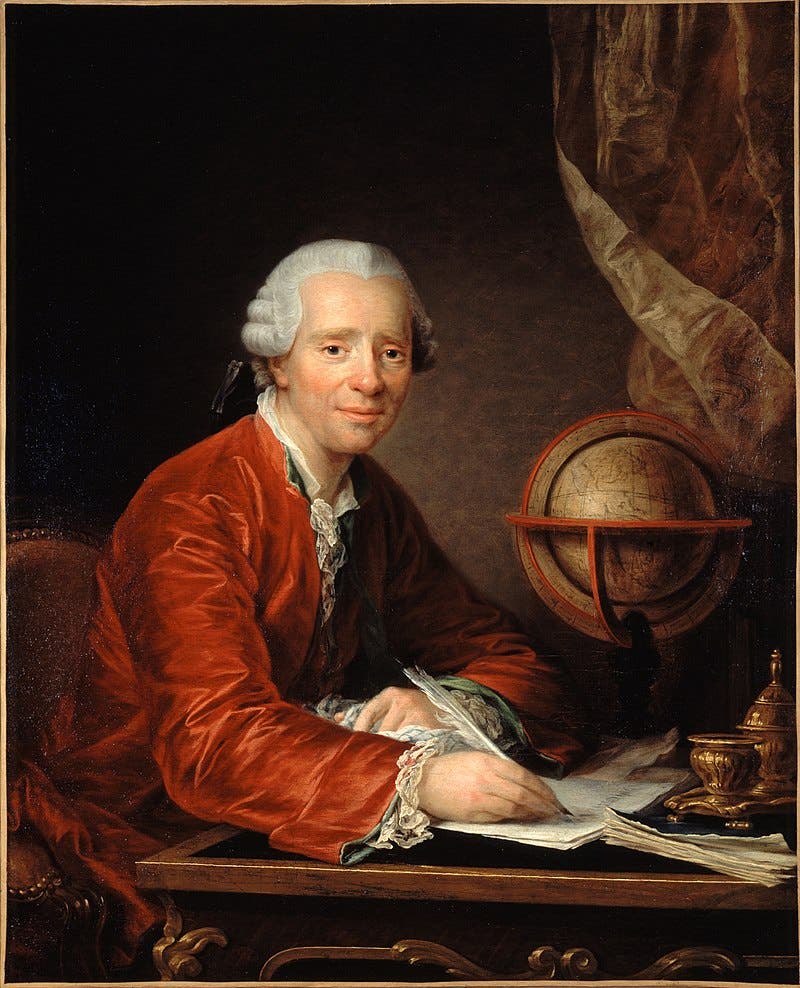Scientist of the Day - Jean Le Rond D’Alembert
Jean Le Rond D'Alembert, a French mathematician and philosophe, was born Nov. 16, 1717. His coming into the world was different than most, as he was left as a foundling on the steps of Saint-Jean-le-Rond church in Paris, and transferred to a foundling hospital, where he was baptized Jean Le Rond, after the patron saint of the church. His mother is known, and his father, long thought to be a military officer who set Jean up with a lifetime annuity, is now suspected to be the duke d’Arenberg, a nobleman at court, in whose stead the miliary officer was acting. Jean was soon transferred to the home of a wet-nurse, with whom Jean maintained a life-long connection. He was known at this time as Jean Le Rond, sometimes as Jean Le Rond d’Arenberg. He was well educated, intended first for the clergy, then law, but it was mathematics that attracted the attention of Jean, especially mathematical physics, as practiced by Isaac Newton, who had recently been introduced to France by Voltaire. When Jean submitted his first paper for publication in 1739, it was under the name Jean Le Rond D’Alembert, a variation on d’Arenberg, and the name by which he is now known.
D'Alembert was very productive for the next five years, writing several books on the forces of motion, the most influential being his Traité de dynamique (1743), a book that we should have in our Library, but do not, although we have several of his follow-up works. D’Alembert was not an experimental physicist, instead developing his system of dynamics from the top down, a rational mechanics. His reputation rose rapidly, and he was admitted to the major scientific academies, including the Academie des Sciences in Paris.
But in the mid-1740s, D’Alembert got sidetracked. Denis Diderot was engaged in planning the Encyclopédie, which was to be the French entry into the encyclopedia business, or more precisely, into the “rational dictionary” business. Diderot needed someone to supervise and help write the many articles on science and mathematics projected for the Encyclopédie, and he chose D’Alembert, who agreed, eventually becoming co-editor of the entire project, at least until 1759. D’Alembert would write some 1500 signed articles for the work plus another 350 unsigned articles that are attributed to him. Articles in the Encyclopédie were signed by a coded letter – D’Alembert’s was “(O)”. We show here the end of the article “Astronomie” (third image), where you can see D’Alembert’s mark. We also show a detail of the Avertissement, where the author codes are identified (fourth image).
But perhaps D'Alembert's finest contribution to the Encyclopédie was the Preliminary Discourse that begins volume one. D'Alembert had not previously shown any particular flair as a man of letters, and it is not clear why he was chosen to write the Preliminary Discourse, discussing the aims and methods of the Encyclopédie, but the result shows that the choice was inspired, for the Discourse is often hailed as one of the finest compositions of the entire Enlightenment, and indeed, if one were to choose a single piece of prose to represent the philosophy of the Enlightenment, this would be it, according to many historians. D'Alembert's philosophy is a mix of the method of Francis Bacon, the rationalism of René Descartes, and especially the empiricism of John Locke, from whom the Enlightenment drew the notion that all ideas are the result of sensation and experience, including the principles of morality and ethics. D'Alembert paid little attention to religion, and almost none to the Church, so the Discourse provoked quite a backlash from religious authorities, as did many of the articles in the Encyclopédie itself. When the Encyclopédie was about a third completed, in 1759, it was banned completely and placed on the Index of Prohibited Books. D'Alembert withdrew from the project at this stage, and poor Diderot had to continue on alone in a clandestine fashion. But the Encyclopédie was finally finished, the ban notwithstanding, with the 17 volumes of text completed in 1765, and the 11 volumes of plates in 1772. We have the entire set in our History of Science collections, including 4 supplementary volumes of text and one additional plate volume.
D’Alembert’s Preliminary Discourse takes up only 45 pages in the folio first edition, but it pretty much fills a modern octavo paperback. You can buy an English translation of the Preliminary Discourse (translated by Richard N. Schwab, University of Chicago Press, 1995) at your friendly local bookseller. It can serve as a wonderful introduction to the Enlightenment.
There is a portrait of d'Alembert in the Louvre, painted by Maurice Quentin De la Tour just after the Discourse was published, in 1753 (first image). (Wikipedia purports to show this painting, but in fact shows a copy of the original, auctioned at Bonham’s in 2013). De la Tour’s portrait is notable in that it portrays a smiling, almost laughing, philosopher, a most unusual (and welcome) deviation from standard portrait practice of the time (D’Alembert makes a much better Laughing Philosopher than Democritus; see our post of yesterday on Heraclitus). I find it interesting that another portrait of D’Alembert, by Catherine Lusurier,1777, in the Carnavalet Museum in Paris, also shows him smiling (sixth image). Perhaps he was really like that all the time, which would explain his popularity in the French salons.
William B. Ashworth, Jr., Consultant for the History of Science, Linda Hall Library and Associate Professor emeritus, Department of History, University of Missouri-Kansas City. Comments or corrections are welcome; please direct to ashworthw@umkc.edu.

